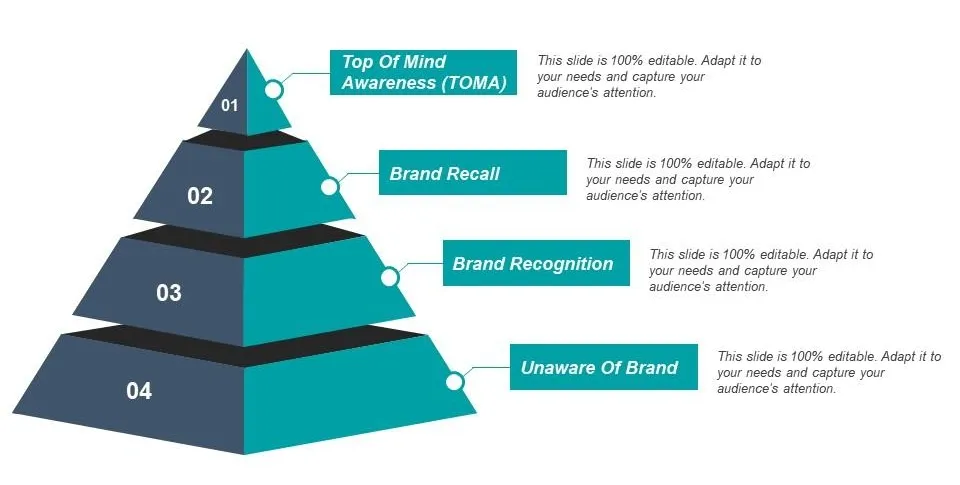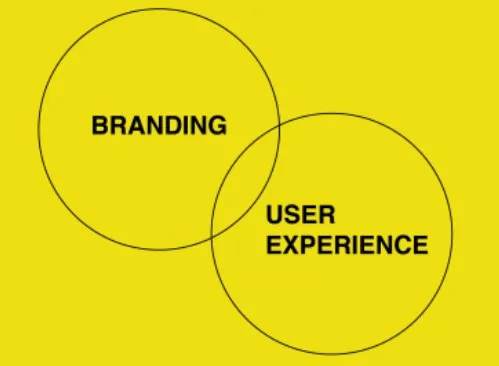The question of how to build and increase Brand Awareness should accompany marketers, UX/UI designers, and UX researchers from the very beginning of the design process.
Although the connections between User Experience and branding may, at first glance, seem remote, it is precisely the opposite. They are connected. To be exact, they have a considerable common part.
Generally speaking, User Experience refers to how a product is perceived, experienced, and assessed from the perspective of its usability, which the user gets to know when interacting with a digital product.
For example, when purchasing a particular band or visiting the brand profile on social media.
Again, in general, branding is not only the selection of the appropriate brand name or defining the key parameters of brand management.
This relates to the way a brand is perceived (each product is and should be understood as a tool but also as a strong brand). What is its image, and how does this image affect the responses to it?
Branding is a set of methods for building brand awareness. It is an idea of how to create a coherent whole of the marketing message.
Brand Awareness is fundamental in thinking about short-term and especially strategic organizational goals.
Building trust in a brand (compared to the competition) can be realized through various means, methods, and solutions, also related to User Experience, development, and implementation of technological solutions associated with the brand.
Building brand awareness in the minds of customers and target audiences is primarily building trust in the brand and its credibility.
It gives it a distinct and desired personality and creates an identity for the users and customers to identify with.
These are also activities in the field of brand awareness and image research.
It is worth recalling that brand value includes the number of people who can independently recognize the brand and spontaneously recommend it.
An aided brand awareness, i.e., an awareness that requires hints, context, or stimulus, is valuable information about the need to take action to raise brand awareness.
Brand awareness and shaping the awareness as a goal (increasing brand recognition among the customers and digital product users) allows you to determine market strategies.
And strategic thinking, in particular in the case of digital products, is today thinking in terms of the categories related to usability, user experience, and the development and optimization of products that should focus on users and their needs.
So, how to build digital product brand awareness using measures in the field of User Experience? How to research brand awareness? How to build brand awareness online?
How does UX affect a brand, and how does a brand influence customer experience? What is digital product branding all about?
If you're curious about building digital product brand awareness and how to involve UX in this process, read this article.
Enjoy the reading!
What is a brand?
Living in the 21st century, we almost obviously understand what a brand is. After all, we are surrounded by brands in every area of our lives. However, it would be proper to provide the definition.

The terms "brand" and "branding" should, of course, be associated with marketing.
A brand is most commonly defined as a sort of organizational business concept that supports the following processes:
- Product/service recognition; serves brand awareness
- Product/service remembering: remembering its category membership and what is most desirable, remembering its attributes, features, and values
- Building relationships, mainly based on the processes of identification, sense of belonging, confirmation of social belonging, and status
- Influence (emotional, symbolic, and semantic)
- Informing about the existence of a product/service and its significance to the user
- Positioning: a brand enables you to differentiate, sort, prioritize, and segment.
- To put it slightly differently, a brand is an intangible aspect of a company, organization, product, and service.
A brand cannot be materialized. It is communicated using the following:
- Symbols, signs, and icons
- Metaphors
- Identifiers
- Associations, references, and connections
- Contexts
- Comparisons.
The purpose of brand building and shaping is to give a product, service, or, more generally, a company the following:
- Status
- Meaning
- Importance
- Value
- Role and function
- Identity
- Position
- Uniqueness and exceptionality
- Distinctiveness and originality
- Mission and goal
- And last but not least, increasing brand awareness.
The purpose of creating and developing brands and building brand awareness is, of course, the desire to gain market advantage, build customer and user relations, and secure commercial, business, and legal interests.
In the broadest sense, brands can be divided into:
- Corporate
- Product
- Personal
- Service.
When discussing a brand, you must remember the process of assigning and developing its identity.
Brand identity primarily includes the following:
- Its name and logo
- Its visual features in the form of color schemes specific to it
- Characteristic visual and graphic forms
- Characteristic language of communication: verbal, symbolic, and referring to specific cultural codes
- Its values, objectives, and activities
- Personality, i.e., the features that enable you to imagine, feel, and understand it and form your cognitive and, first of all, emotional attitude towards it; it is a band's "human" aspect that allows you to depart from functional features in its description.
In short, because of the issues of brands, their creation, assigning them identity, researching brand image, brand positioning, etc., being wide-ranging, that's how you can describe the understanding of a brand in the field of marketing.
How is a brand perceived, shaped, and designed within the scope of UI/UX Design activities?
How is the digital product branding specificity expressed?
What is a brand in UX? What is branding design?
Similarly to material product branding, digital product branding (which serves to build brand awareness) is founded on the same reason: rapidly growing competition.
As of 2022, the web and mobile application market is huge.
In each market segment, industry, and category, you can find many applications.
They struggle for dominance and market presence stability and try to meet the market's needs in a manner as accurately targeted as possible.
The article "Experience is everything. Get it right" by PwC summarizes the results of surveys on the impact of experience on consumer behavior. They quite clearly indicate that experience is currently an essential part of competing.
Experience adequate to the needs ensures:
- User satisfaction
- Customer loyalty
- Spontaneous recommendations
- High ratings and good reviews in rating systems (we discussed this issue in the article "Ratings and reviews in online stores")
- And eventually, increasing brand recognition.
However, according to the above article, experience, or actually its essence, for many digital product users means the following:
- Speed
- Convenience
- Consistency
- Friendliness: human dimension of the technology.
In the case of digital products, commitment to User Experience enables you to provide the type of experience that is cognizable, perceptible, and recognizable during the interface interactions.
Digital product branding (digital brand management) allows you to communicate these features more effectively before, during, and frequently after an interaction.
Keep in mind that the relationship between a brand, User Experience, and usability works like a synecdoche, i.e., a figure of speech that indicates a phenomenon, feature, attribute, or value by using the name of a different phenomenon.
In other words, if a bank's mobile application works fast and makes an impression of being secure and hassle-free, the bank that offers it will be perceived as fast, safe, and hassle-free.
Particular impressions and experiences will be transferred to the entire class of phenomena with a broader scope and to the class of more universal phenomena.
Therefore, a digital product brand should be able to communicate these features, impressions, and experiences, strengthen their impact and translate them into a more suggestive, illustrative, visual, and "tangible" language.
Experiences have this inconvenient feature that they must be somehow expressed: in language, graphics, photography, icon, symbol, or metaphor.
The experience of an application working fast should be accompanied by an easily communicable and universally understood verbal, graphic, animated, audio, or audiovisual equivalent.
Creating a digital brand is also finding the most effective code that enables you to express its features and attributes and communicate them to the users.
The point of contact between a brand, traditional marketing, User Experience, and digital product branding is the Awareness stage in the sales funnel, which we discussed in the article "How to design a sales funnel?".
The article "UX Can Improve the Effectiveness of Your Marketing Campaigns" offers an interesting metaphor for these relationships.
According to the authors, the user journey starts with marketing, and user experience is a lubricant that helps the customer smoothly go through the funnel and convert.
It is hard to disagree with such a view.
The more so that, as the article authors aptly observe, the interdependence of UX and marketing activities is also expressed in the fact that UX provides impressions that bring the user closer to the product.
They build brand awareness and are important to potential customers. Building brand awareness also involves adapting the experience to a specific target group.
Branding makes the customers remember it and distinguish it from the competition.
A digital product image and spontaneous brand awareness bring the customers closer to the brand. The User Experience (UX) and Customer Experience (CX) induce them to repeat interaction and become loyal users.
Even more important, both fields have extensive and very effective research facilities. As a result, messages, creating a strong brand, and determining brand strategy can be based on data, research, and test results.
Keep in mind that the pillars of contemporary competition practices are:
- Visual content/visual identification
- Brand positioning
- Unique user experience (UX).
Visual identification of the brand serves its aesthetic character, but, first of all, it should serve to express the brand's personality, message, and Value Proposition.
A brand is more than nice packaging. It is a packaging that supports the process of remembering, recognizing, informing, and evoking emotions.
In the world of digital products, a lot of product/service information is communicated through the elements associated with the brand.
Brand Awareness - what is it?
A very accurate definition of Brand Awareness can be found in the article "The Ultimate Guide to Brand Awareness," published in the HubSpot blog.
According to it, brand awareness is the level of familiarity of the customers and users with a brand. It is also the extent, easiness, and speed of the brand recognition.
Brand awareness also refers to the level of knowledge about the brand, opinions about the brand, and true and false beliefs, enabling the brand to have a good reputation.
Brand awareness equally applies to the cognitive, emotional, and behavioral components.
In other words, brand awareness translates into what you know about the brand and whether you can identify it correctly.

Whether we are able not to confuse its features and attributes with another brand, what emotions and feelings we have towards it, and how we behave towards it.
Brand awareness builds attitude towards it and, first of all, determines the level of trust the customers put in the brand.
With its unique personality and identity, a brand plays a crucial role in strengthening sensations, including the effect on credibility and trust.
Equally important, awareness of a brand recognized by customers is also a set of typical associations and of what is associated with it, to which experience and emotion records it refers.
Associations are significant because they allow you to understand better and predict what benefits, emotions, experiences, and feelings can be expected.
The associations triggered by a digital product brand suggest the following:
- Result
- Cost
- Risk
- Process
- Complexity
- Possible reactions.
Brand awareness also includes its value.

Experience, image, and perception enable you to predict future behavior and draw conclusions about loyalty and the willingness to buy again or renew a subscription.
Brand value that results from awareness allows you also to justify the following:
- Price
- Accessibility: determine the extent of inclusivity/exclusivity
- Strategies
- Activities and choices made by the brand
- Objectives.
What is brand awareness?
Building brand awareness is, first of all, a process that never ends. The business value of a brand is created constantly.
The customer structure changes, and so do the market, competition, and the way to compete. As a result, it is necessary to constantly respond to these changes and communicate the current brand version to its current and prospective customers.
How to build brand awareness online?
Perhaps the most important, and definitely most often suggested, actions in the brand-building process are the following:
- Knowledge of the brand
- Understanding of its audience: customers and users
- Regular studies of brand perception
- Defining personality and identity appropriate for the time frame, business scale, context, market, and customer structure
- Maintaining consistency of brand attributes, features, and values across various channels.
The first item, knowledge of your brand, may seem paradoxical and incomprehensible.
However, many companies starting their brand building have a huge problem defining what companies and brands they want to be. And what value they want to embody and offer.
Creating and defining a brand requires multidimensional and multifaceted thinking to integrate into coherent whole such issues as:
- Brand archetypes
- Brand objectives
- Brand strategies
- Brand language
- Brand attributes
- Brand positioning
- Brand promises
- Brand voice
- Brand mission
- Ways of experiencing a brand.
All these points must also result from a thorough and in-depth audience knowledge.

A brand must resonate with the customers and users with their actual needs, pains, expectations, and experiences. The way to understand these issues is to conduct research, tests, and analyses.
When creating a brand concept, you should consider the following:
- Main value, benefit, and goal; or, more generally, it should be defined as what and who a brand is meant to represent as some of the customers and users tend to identify strongly with a brand
- Emotional effects caused by a brand; it should be determined by what the users should feel in contact with the brand
- Effects of association and ideas; it should be defined what kind of associations should be triggered and what ideas should be inspired and stimulated by the brand.
What is brand identity UX?
Identity is an ambiguous word.
The dictionary definition of identity defines it as, among others, self-awareness and facts, characteristics, and personal data allowing you to identify an individual.

In the case of brand awareness, it regards similar issues, namely the awareness of who you are as a company (and consequently, who you are not).
It is also about collecting and expressing the features, goals, and values that constitute who you are and allow you to indicate a clear difference compared to other companies.
It is equally important to find visual, symbolic, metaphoric, iconic, emotional, functional, narrative, and aesthetic elements that enable you to visualize, express, identify, and present these features and attributes.
And it is also about the quality of such communication. It should be as appropriate as it is attractive.
For digital products, it is necessary to find the components of a website or web application that communicate and express it best.
It can be the functionality, content layout, colors, style, mode of operation, or way of interacting.
The way we use a digital product should stem from brand identity and personality.
For example, if a brand's attribute is speed, its website cannot work slowly.
If a brand's attribute is freedom, the functionalities should offer maximum flexibility in terms of control and possible actions and goals.
Each of the key attributes of a brand should be represented in the following:
- Website/application mode of operation
- Website/application appearance and aesthetics
- Website/application content
- Website/application set of functionalities
- Website/application usability
- Website/application technology
- Website/application way of communication.
Web and mobile applications should be emanations and examples of the brand's attributes in action.
The article "The Impact of Interaction Design on Brand Perception," published on the Nielsen Norman Group blog, sums it up best.
Its author, Kate Moran, aptly points out that almost every aspect of a digital product interface can influence the portrayal of a brand identity or personality.
In particular, they include the following:
- Visual design: interface appearance affects the user's associations, ideas, expectations, and behavior
- Content design: influences how a digital product "sounds" to the user
- Interaction design: influences how the user feels performing actions and what "kind of partner" is the digital product to the user.
In various studies on digital product branding, most attention is paid to the issues of aesthetics, appearance, visual attractiveness, and possibly the symbolic significance of colors.
Naturally, these are very important issues, but more attention should be paid to the connections between branding and interactions.

Kate Moran's article interestingly fills this gap. The more so that the author cites studies in which the connections between interactivity attributes and brand attributes have been examined in detail.
Interactivity attributes particularly useful from branding's perspective are the following:
- Responsiveness
- Way of manipulation: indirect (e.g., using a slider) or direct (e.g., by clicking)
- Precision
- Pliability: how easy/difficult it is to introduce a change
- Continuous or discrete behavior (related to interruptions and division into stages)
- Labeling and feedback
- Expected or unexpected system behavior and reactions
- Consistent or inconsistent system behavior, compatible or incompatible with current design patterns.
The system interactivity attributes can be related to brand attributes so that it is possible to communicate brand features and attributes not only through visual and functional layers but also through the interaction layer.
How to build brand awareness? How to research it? Summary
- In the case of digital products, strategic thinking today is thinking in terms of categories related to usability and user experience.
- Experience is currently an essential part of competing. Brand awareness alone is no longer enough.
- A brand is defined as a sort of organizational business concept supporting the process of recognizing, remembering, building relationships, influencing, informing, and positioning digital products/services.
- The purpose of creating brands is recognizability, the need to gain market advantage, build customer relations, and secure commercial, business, and legal interests.
- Creating a digital brand is also finding the most effective code that enables you to express its features and attributes and communicate them to the users.
- Branding makes the customers remember it and distinguish it from the competition.
- A brand is more than nice packaging. It is a packaging that supports the process of remembering, recognizing, informing, and evoking emotions. It is about a good reputation, which is important when making a decision related to effective product sales.
- Brand awareness is the level of familiarity of the customers and users with a brand. It is also the extent, easiness, and speed with which they can recognize the brand.
- Brand awareness also refers to the level of knowledge about the brand, opinions about the brand, and true and false beliefs.
- Brand awareness equally applies to the cognitive, emotional, and behavioral components.
- Brand awareness builds the attitude towards it and, first of all, determines the level of trust put in the brand. It ensures brand recognizability.
- A brand must resonate with the customers and users and their actual needs, pains, expectations, and experiences.
- The system interactivity attributes can be related to brand attributes so that it is possible to communicate brand features and attributes not only through visual and functional layers but also through the interaction layer.







